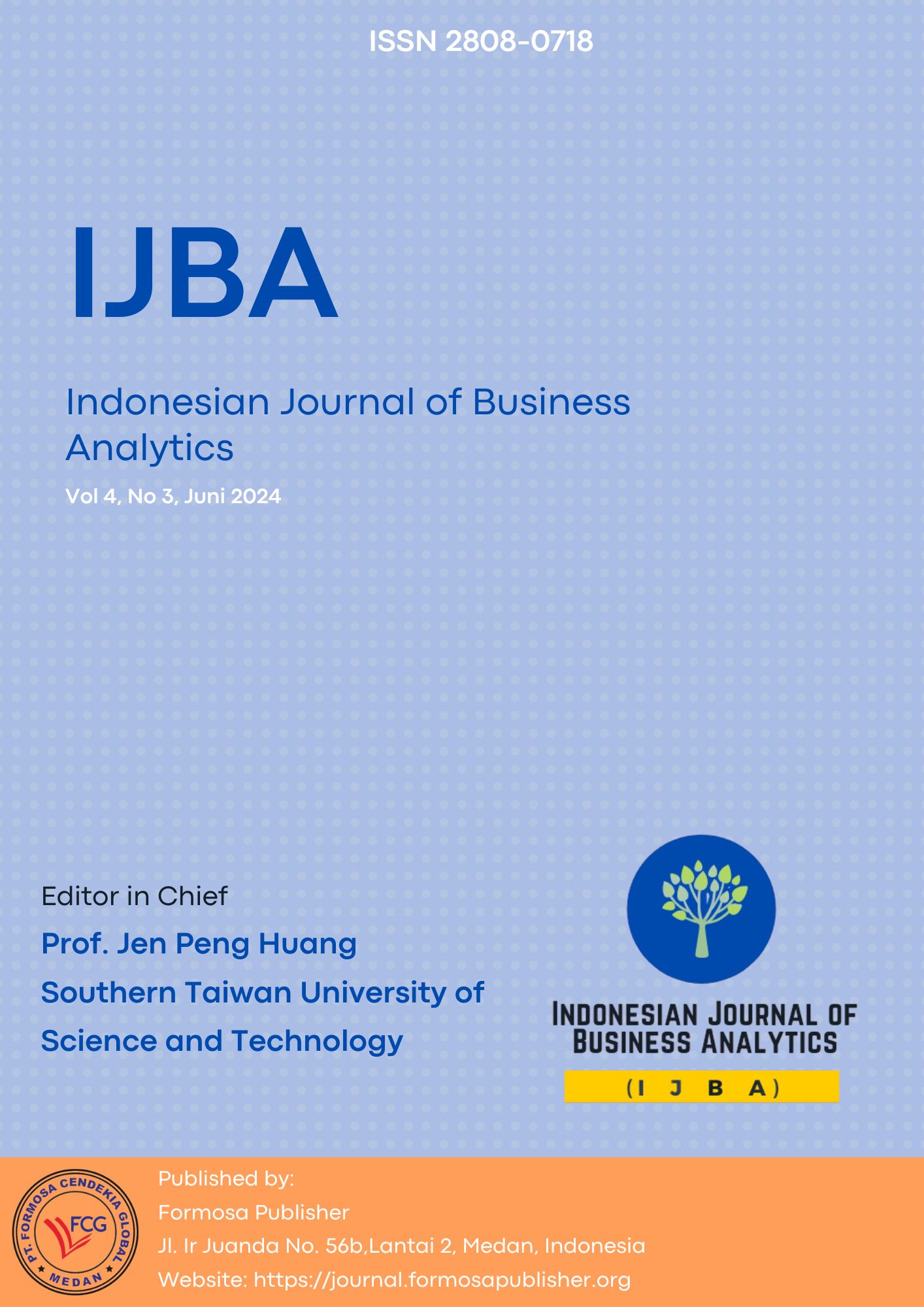South Korea Market Potential Analysis for Forestry Products
DOI:
https://doi.org/10.55927/ijba.v4i3.9696Abstract
The use of wood as a high-value product does not stop there. Paper, furniture, carbon, and rubber are examples of other non-wood forestry products that we often encounter in everyday life but come from forests. The purpose of this study is to analyze the potential of the South Korean market for forestry products. In this study, we use qualitative methodology to understand and evaluate the opportunities and problems faced by Indonesian forestry products, as well as the global market potential for these products. The potential for Indonesian wood commodities and wood products to enter the South Korean market which has minimal domestic supply still has great potential. With abundant supply, offering quality, competitive prices and guaranteeing the required legal documents, it is believed that Indonesia has the opportunity to answer the needs of wood and wood products in the South Korean market in the future
Downloads
References
Agriculture, F. A. (2023). http://www.fao.org/3/W5547E/W5547E02.htm.
Al Qossam, M. I. (2019). Analisis Daya Saing Dan Struktur Pasar Kayu Lapis Indonesia Di Pasar Internasional. Jurnal Ilmiah, 1–19.
Badan Promosi Kehutanan Korea. (2022). http://gis.kofpi.or.kr/gis/mainServiceIntro/view.do#title0.
Calo-Blanco, A., & Naya, J. M. (2005). Economic Integration, Non-tariff Barriers and Social Welfare. Journal of Economic Integration, 20(2), 318–328. https://doi.org/10.11130/jei.2005.20.2.318
Cho, Y.-S., & KEEI. (2018). 2018 Energy Info, Korea. 1–97. www.keei.re.kr
Dwiprabowo, H., Basuno, E., Salim, H.
P., Suharjito, D., & Ginoga, K. L. (2017). Sosial dan Ekonomi Kehutanan. Penelitian Sosial Dan Ekonomi Kehutanan, 14(687), 1.
Fauzi, H., M. Aryadi, dan T. S. (2014). Budidaya dan Produk Perlebahan Trigona spp di Lombok, Nusa Tenggara Barat. In Prosiding Seminar nasional: Peranan dan Strategi Kebijakan Pemanfaatan HHBK dalam Meningkatkan Daya Guna Kawasan (Hutan).
Forest, K. (n.d.). http://english.forest.go.kr/kfsweb/kfi/kfs/cms/cmsView.do?cmsId=FC_001679&mn=UENG_01_03.
Indonesian Trade Promotion Centre (ITPC) Busan. (2021). Laporan Informasi Intelijen Bisnis Produk Woopellet HS 440131".
Jade Saunders and Marigold Normanfile:///C:/Users/HP/Downloads/httpsilk.dephut.go.idindex.phpabout.t
xt. (2018). Forest Trends, Regulating the Trade in Illegal Timber:Republic of Korea Update.
Kehutanan, D. (2019). http://silk.dephut.go.id/index.php/about.
Ko Dong-hwan. (2020). https://www.koreatimes.co.kr/www/nation/2020/06/371_290955.html.
Korea Forest Service. (2014). Lessons learned from the Republic of Korea’s National Reforestation Programme.
Makmun. (2020). Green Economy: Konsep, Implementasi, dan Peranan Kementerian Keuangan. In Jurnal
Ekonomi (Vol. 1, Issue 1, pp. 1–17).
News, P. (n.d.).
https://pulsenews.co.kr/view.php?year=2020&no=204761.
Perdagangan, K. (2022). Meskipun mengalami pelemahan, neraca perdagangan kembali mencatatkan surplus pada mei 2022.
Science, N. I. of F. (2023). https://eng-nifos.forest.go.kr/kfsweb/kfs/subIdx/Index.do?mn=UEFR.
south korean. (2023).
https://www.wood-pellet-mill.com/wood-pellet-news/South-Korea-Wood-Pellet-Market.html.
Stangarone, T. (2020). https://thediplomat.com/2020/05/south-koreas-green-new-deal/.
Sucindo. (2020). https://silk.sucofindo.co.id/lookup/HSLOV.php?pKodeIndustri=&itemBack1=pKodeProduk&itemBack2=pHS.
Sukmayana, D. (2023). Analisis Potensi Pasar Global Bagi Produk Kehutanan: Peluang Dan Tantangan Bagi Pengusaha Bisnis Kayu Dan Hasil Hutan LainnyaSukmayana, Dodi, ‘Analisis Potensi Pasar Global Bagi Produk Kehutanan: Peluang Dan Tantangan Bagi Pengusaha Bisnis Kayu Dan Hasil . Komitmen: Jurnal Ilmiah Manajemen, 4(2), 274–285. https://doi.org/10.15575/jim.v4i2.30422
Downloads
Published
How to Cite
Issue
Section
License
Copyright (c) 2024 Anto Purwanto

This work is licensed under a Creative Commons Attribution 4.0 International License.







.png)

























